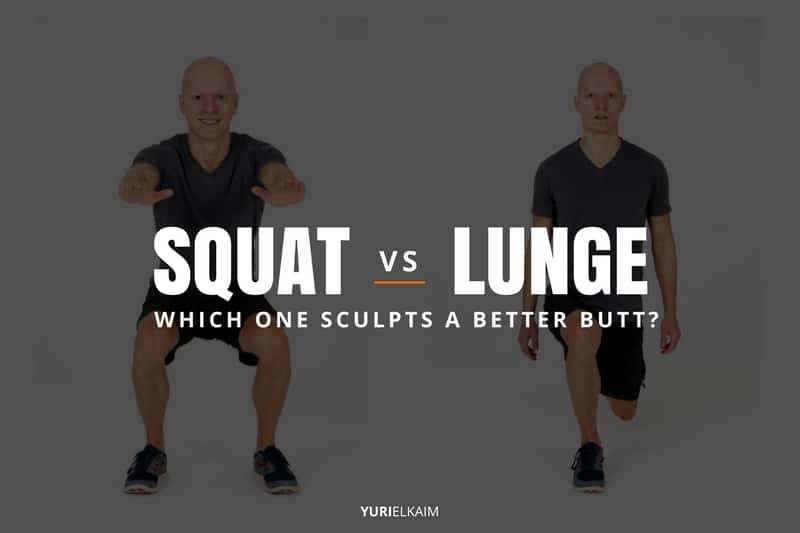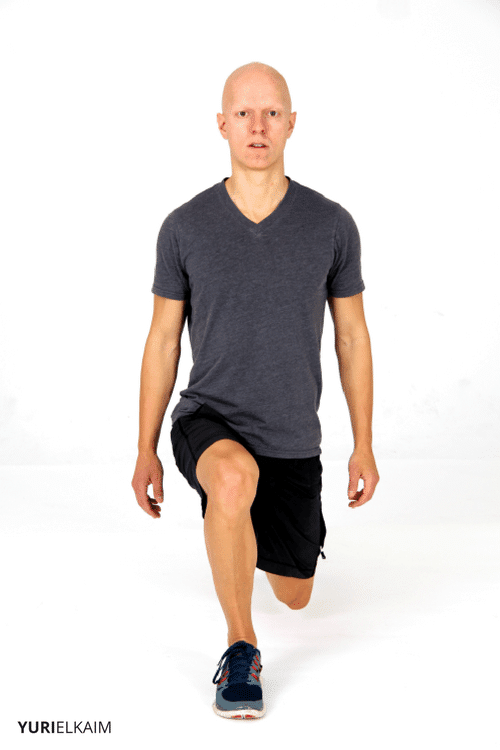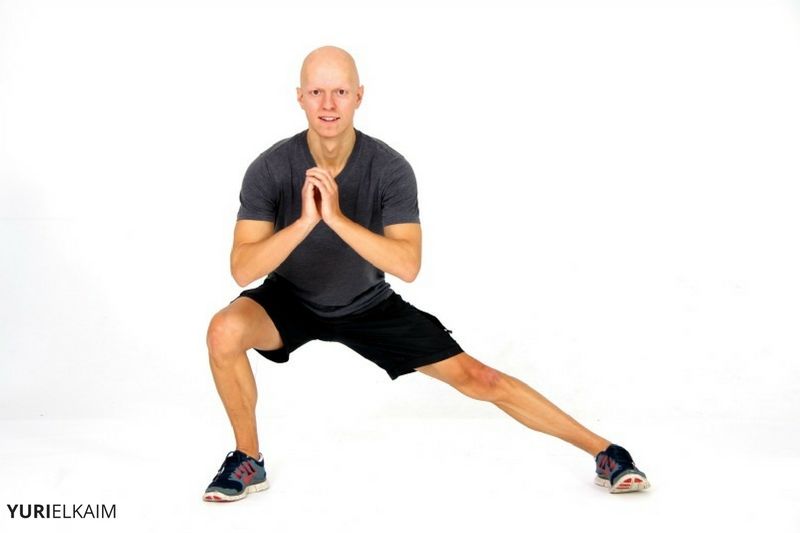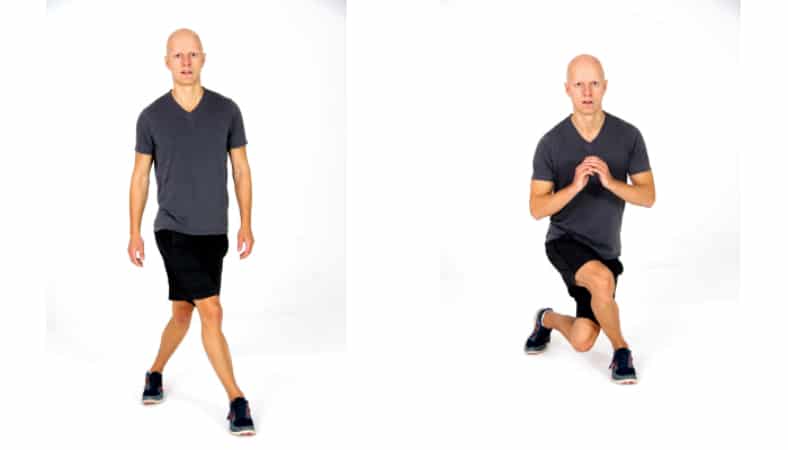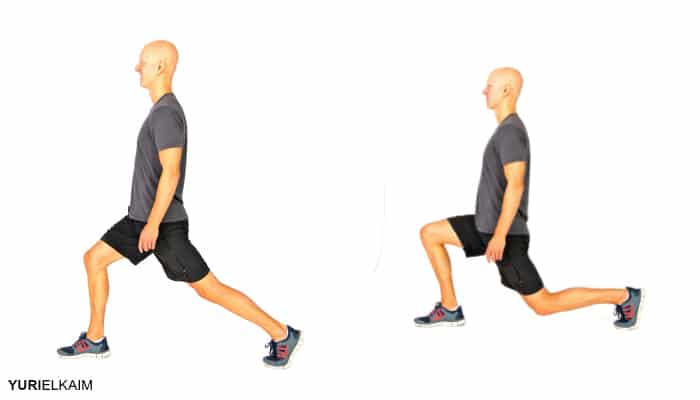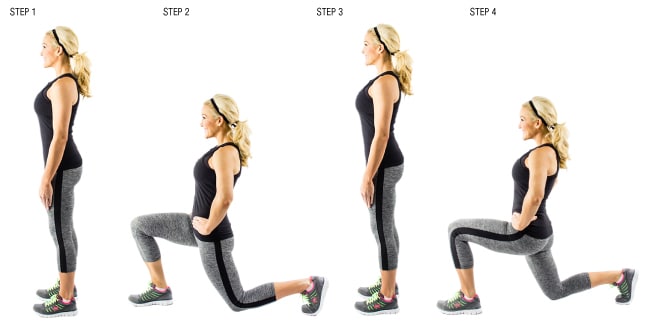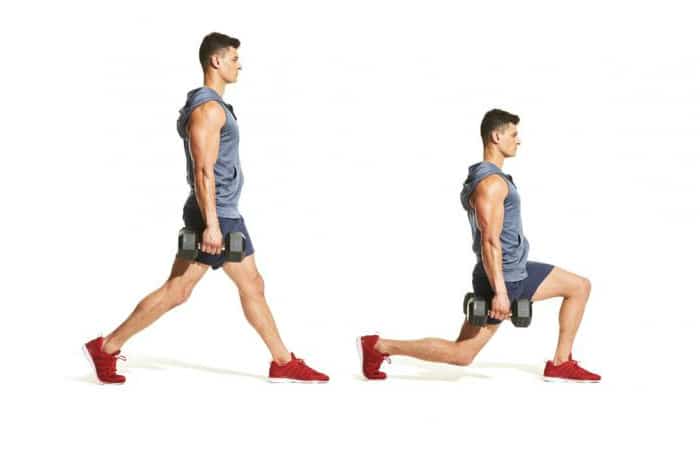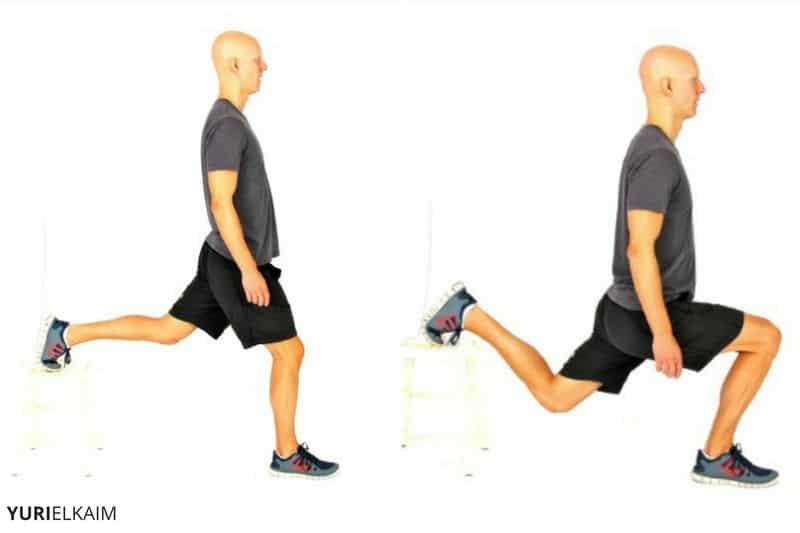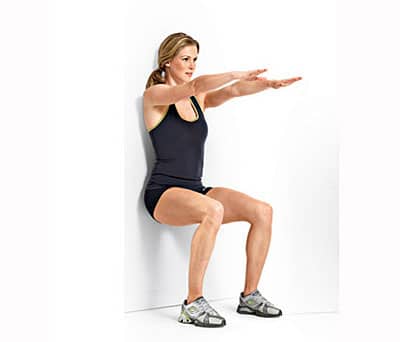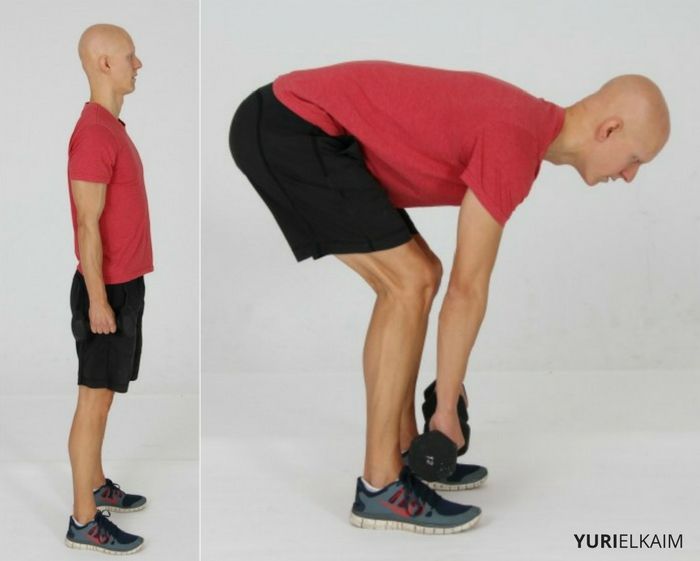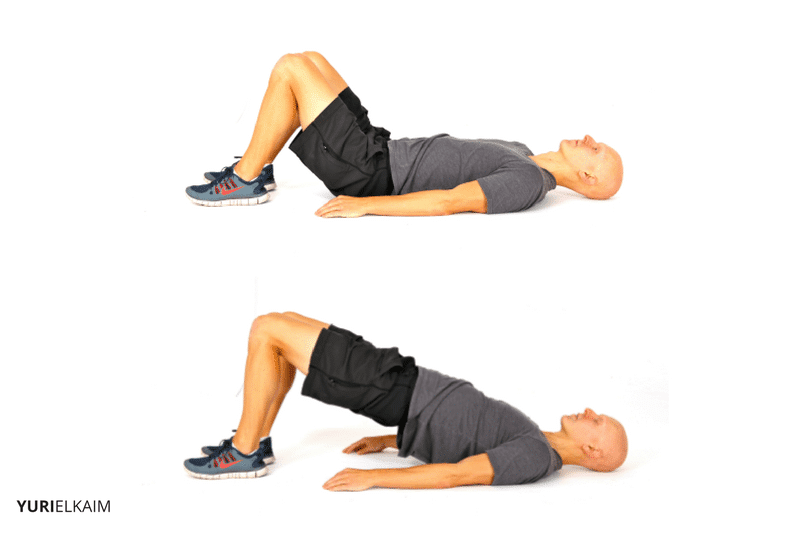“If you absolutely had to choose …”
We’ve all been there, caught between one amazing choice versus another of the same greatness. How can you choose? It’s almost impossible – and as a result, we usually don’t.
But I’m going out on a limb today to make a choice – to tell you which exercise I think sculpts a better butt and legs.
The contenders are squats vs lunges. Now, the choice isn’t easy but after careful analysis …
The Winner Is …
Lunges.
(Gasp!) I know. But I have my reasons, and they’re based on substantial evidence.
Squat vs Lunge
Lunges have a leg up (get it?) when it comes to sculpting a tight butt and legs for a number of reasons.
1. Muscle Activation
Both the lunge and the squat activate the quadriceps, hamstrings, and glutes at different stages of their movement. However, even though forward lunges activate more of the quads than the glutes and hamstrings, other lunge variations – which you’ll see below – effectively target both the glutes and hamstrings.
Not to mention, lunges also mimic a wide range of natural, functional movements such as walking, running, sprinting, and climbing/going up stairs, making them excellent for developing everyday strength.
Also, since the movement occurs on just one leg, lunges activate more stabilizer muscles. These muscles involve our core and help our spine remain stable during real-world and sport-specific movements.
Surprisingly, Bulgarian split-squats (a variation of the traditional lunge, which has the rear foot elevated on a bench or box) also elicit similar activity in the rectus abdominis and erector spinae muscles as squats (1).
Recommended Reading:
2. Correcting Imbalances
Lunges are also excellent for correcting muscle imbalances in one or both legs, since you are able to isolate each leg. This gives you the ability to balance out your strength in both legs, which can aid in spinal alignment and possibly help with low back pain.
3. Huge Variety
It’s no surprise that lunges offer more variations than the squat, giving us the opportunity to reach more muscle groups with one type of movement.
As you’ll see below, lunges aren’t limited to standard forward lunges, but can also include lateral lunges and curtsy lunges, both of which target more of the outer and inner thigh muscles.
Top 10 Lunge Variations
So, we know that lunges trump squats when it comes to variations, but this list below will surprise you with just how many kinds of lunges there actually are.
These lunge variations are listed from least difficult to most difficult, so choose based on your fitness level. Add several into your lower body routine 2 to 3 times per week to start sculpting lean stems.
1. Forward Lunge
The forward lunge is an excellent starting point for building up the leg strength required to perform the more difficult variations. It will engage your glutes, quads, and hamstrings, tying them all together to create sculpted, lean legs.
- Begin standing tall, avoiding rounding your shoulders.
- Extend your right leg in front of you and lower into a lunge until your thigh is parallel to the floor. Make sure your knee is behind your toes at all times.
- Push back to standing through your heel, engaging your glutes.
- Repeat on your left leg and alternate for 10 to 15 reps on each leg.
2. Lateral Lunge
Lateral lunges get your inner and outer thighs involved in the lunge game, so you can be assured your entire leg and hips are getting their share of burn.
- Begin by standing with feet hip-width apart. Making sure to point your knee in the same direction as your foot, take a large step to the right, pushing your hips back.
- Lower until your thighs are parallel to the floor, keeping your knees behind your toes and your spine straight.
- Return to your starting position by pushing through your heels.
- Repeat, alternating sides, for 10 to 15 reps on each leg.
3. Curtsy Lunge
Once a way to show respect to kings and rulers, now an epic glute-targeting exercise.
- Begin standing tall (avoid leaning forward during this exercise).
- Cross your right foot behind your left and lower into a lunge. You should feel your left outer hip and glute engaging.
- Return to standing, alternating legs, for 10 to 15 reps on each leg.
4. Reverse Lunge
The reverse lunge puts more emphasis on the glutes as opposed the the forward lunge, which hits the quads harder.
- Keeping your spine straight, extend your right leg behind you while lowering into a lunge with your left leg.
- Push to standing through your left glute.
- Repeat, alternating legs, for 10 to 15 reps on each leg.
5. Walking Lunge
Walking lunges are a great way to get in all of the benefits of the stationary lunge, while also working your stabilizer and core muscles. You’ll also get a nice boost to your heart rate, making these a great addition to a fat-burning high-intensity interval training (HIIT) workout.
- Standing tall, lunge your right foot forward and lower into a lunge.
- Push forward off your right heel and lunge forward with your left leg.
- Continue lunge-walking for a total of 20 to 30 reps, being sure to keep your knees behind your toes with every lunge.
6. Swing Lunge
The swing lunge is essentially a standard forward lunge combined with a reverse lunge. With its continuous movement, you’ll really feel the burn in your gluten and quads.
- Begin by standing tall (you can hold dumbbells if you’re looking for an extra challenge).
- Lunge forward on your right leg, making sure your knee stays behind your toes.
- Return to standing, pushing through your heel. Now, instead of stopping here, extend the same leg behind you into a reverse lunge.
- Repeat for a total of 10 to 12 reps, then switch to the other leg.
7. Stationary Lunges
Stationary lunges challenge your entire working leg, sculpting the hips, glutes, and quads in a single-leg fashion.
- Begin with your feet hip-width apart. Extend you right leg forward and lower into a lunge (thigh parallel to the ground).
- Instead of pushing back to standing, simply push through your glute to straighten you right leg, then lower once again.
- Repeat for 10 to 15 reps, then switch legs.
8. Bulgarian Split Squats
Bulgarian split squats are excellent for single-leg isolation — great for if you’re trying to correct muscle imbalances. They’re also good for engaging and strengthening the stabilizer muscles due to the balance required to lunge on one leg.
- Begin by placing yourself in a staggered stance (one foot forward) with one foot propped behind you on a bench or box.
- Lower into a lunge by bending your knee, being sure to keep your spine straight. Lower until your thigh is parallel to the ground.
- Push through your heel to return to your starting position and repeat for 10 to 15 reps.
9. Weighted Lunge
For weighted lunges, you’ll need either a barbell or dumbbells of a challenging weight.
- Assuming you’re using dumbbells, grab a dumbbell in each hand, resting them at your sides.
- When you’re ready, lunge forward on your right leg, lowering to parallel.
- Push back to standing through your heel, then repeat on your other leg.
- Alternate sides for a total of 8 to 10 reps per leg.
10. Switch Lunge
Switch lunges are a heart-pounding, total-leg burning lunge variations that work well in HIIT workouts.
- Begin standing tall. Lower into a lunge by extending your right leg behind you.
- Now, instead of slowly returning to standing as you would during a regular lunge, explode up, switching your legs so that you come down into a lunge on your right leg.
- Repeat for 8 to 10 reps (or more, if you’re up for it!).
If You Have Knee Pain
If your knees are cranky and you can’t perform lunges, there are still a few alternatives that can still get your legs toned.
Wall Squats/Sits
Extend your legs in front of you, keeping your back flat against a wall. Lower into your thighs are parallel to the floor, knees at a 90-degree angle, and hold for 30 to 60 seconds.
Shallow Stationary Lunges
Stagger your legs so that one is in front of the other, feet about hip-width apart for balance. Slowly lower into a mini-lunge (about 3 to 4 inches) and pulse for 10 to 20 reps. Repeat on your other leg.
Deadlifts
Begin with your feet hip-width apart, knees slightly bent.
Hinge forward at your hips and grasp either your barbell or a pair of dumbbells. Keeping your spine straight, chest up, and weight close to your shins, return to standing by engaging your glutes. Repeat for 8 to 12 reps.
Bridges
Begin lying on your back on the floor. With feet hip-width apart, push your hips skyward through your glutes and heels. Pause for 2 seconds at the height of the movement, then lower. Repeat for 10 to 15 reps.
Don’t Skip the Squats
A final word: just because lunges win this leg-sculpting battle, doesn’t mean you can’t get your squat on.
In fact, along with a wide variety of other leg exercises, you should include squats in your routine.
If you’re looking for a place to start that has plenty of options, check out this post.
Sculpt Muscles and Blast Fat
Want a leaner, trimmer, defined body?
Be sure to download my FREE Fat Blaster Workout, which includes an instructional video, workout tracker, and follow-along audio.
You’ll love the results. It’s a $29 value, but you can download it right now by clicking the image below!

